Despite a summer dominated by both fire and heavy rain, significant recovery progress has been made since record flooding swamped Australian Wildlife Conservancy’s Mornington Wildlife Sanctuary (Bunuba and Kija country) in the central Kimberley. A skeleton crew, residing in the few facilities unaffected by the extreme weather event, assisted by volunteers and contractors, cleared 18 tonnes of debris, removed up to 1,900 feral stock, and reinstated critical utilities such as water and electricity – but there is still substantial work ahead.
It was January 2023, when heavy rainfall from ex-Tropical Cyclone Ellie caused river levels to rise throughout the Kimberley, backfilling into Mornington’s operations base. The largest flood event on record forced staff and visiting researchers to evacuate by helicopter, as personal belongings, equipment and years of herbarium specimens floated away, and operations infrastructure drowned in the downpour.
Despite a few setbacks over the last 12 months, with unplanned fires and intense storms, the team has achieved some great conservation outcomes and is looking forward to the year ahead.
“Sometimes it feels like we’re playing disaster bingo but we don’t let it get us down,” said Sanctuary Manager, Stella Thomas.
“It looked like someone had picked everything up and then dropped it. Everywhere you looked there was devastation,” Stella described the wreckage she witnessed at Mornington in the weeks after the floodwater receded. “Our work and personal items as well as furniture were strewn everywhere, fridges had collapsed, and cars and buggies were broken. The grass had grown to over two metres, it was so high that it covered everything and I couldn’t even see the buildings.”
Prior to the 2023 deluge, Mornington was home to one of Australia’s most remote fully-equipped research stations for ecological research, situated under ghost gums and bauhinia trees on the banks of Annie Creek. The site included over 20 buildings made up of offices, laboratory facilities for scientists and land managers, workshop with vehicles, survey equipment and living quarters for permanent and seasonal staff. There was also over 20 buildings for the much-loved campground, visitor centre and restaurant which was popular with tourists driving the Gibb River Road during the dry season.
Stella estimated that about 95% of the sanctuary’s operations base was affected, with only four houses and a workshop surviving the floods. “Even the buildings that were spared had issues in the aftermath,” she explained. The remaining infrastructure can only cater to up to five AWC staff at a time, a mere 10% of the average 40 team members that are usually based at Mornington during the peak April to August season.
Despite the small crew and significant clean-up ahead, Stella and the field team jumped right into recovery mode. “We’ve had to triage what is achievable, and although it has been a challenge we’ve made significant headway in recovery and had some great conservation outcomes.”
Mornington’s recovery started with the aim of bringing the surviving facilities back to safe, liveable standards. Electricity and water facilities were restored to those parts of the sanctuary in April, and those buildings have been deemed safe to re-occupy, supporting short-term stays by staff.
Road access became feasible in early May and the AWC team led the way, working to re-establish 4WD road access.
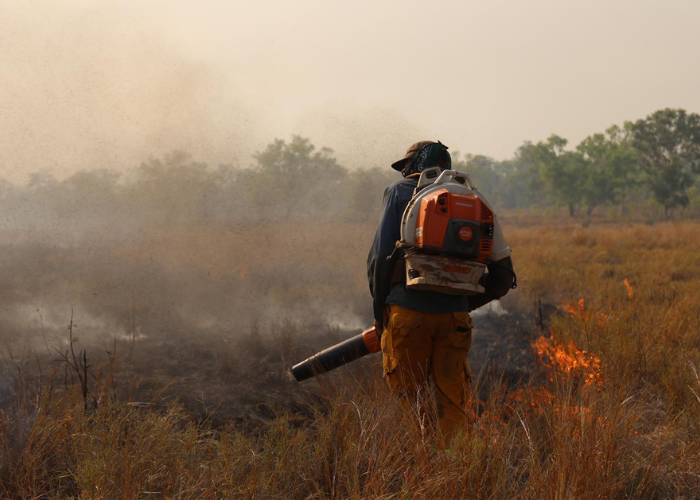 Stella Thomas/AWC
Stella Thomas/AWC
Once roads were reopened, AWC was able to deliver its planned burn program. Three consecutive wet seasons, coupled with the extensive flooding, had created an environment of “thick and green” vegetation that Stella described as a challenge to burn.
The team “spent a lot of time trying to perfect timing for the early season burn and conducted a lot of aerial burning”. In total, the team completed prescribed burning across 580,000 hectares on Mornington Marion Downs Wildlife Sanctuary as well as Tableland, a 310,000-hectare property managed by AWC in partnership with the Yulumbu Aboriginal Corporation.
Fires continued into the late dry season, with dry lightning contributing to multiple and consecutive unplanned fires from October to December.
“In November, we were monitoring or managing a new fire every day,” Stella said. “We make a range of considerations in trying to mitigate those late-season fires Fortunately, the early season burn scars create havens for animals to retreat to and prevent fire from entering those gullies, gorges or riversides, and this keeps the team going.”
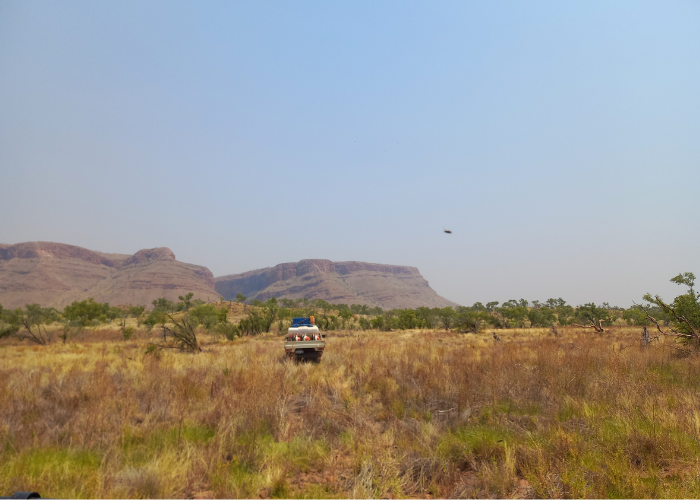 Stella Thomas/AWC
Stella Thomas/AWC
Mornington’s recovery continued with a “big working bee of cutting grass”. It may seem odd to city slickers, but unlike the average 200 square-metre Australian lawn, the sanctuary’s operations base is 30 hectares and covered in fast-growing grass. Keeping on top of the growth is almost a full-time job.
“During the wet season you can just keep going around mowing the lawn because things grow so quickly and if it gets high enough, the infrastructure just disappears in it,” Stella explained.
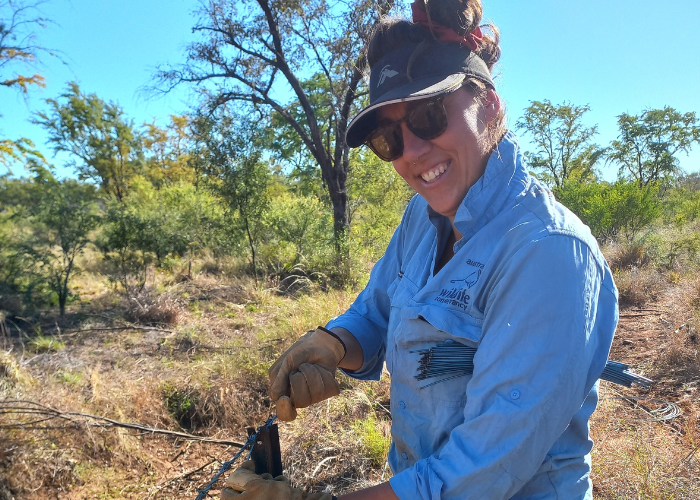 Stella Thomas/AWC
Stella Thomas/AWC
Once the curtain of grass was trimmed to a manageable length, Stella and the team headed out to southern Mornington to restore the 100-kilometre stock-proof fence.
The fence, which protects 40,000 hectares of high ecological value land in southern Mornington from the environmental impact of feral herbivores, was severely damaged during the flood. Entire sections were pulled down by surging water during the flood and needed to be replaced. Fortunately, two members of the AWC team, Corey and Dylan Malay, are experienced with fences and the team successfully restored the protective barrier by August.
After fixing the fence, Stella said the next big focus was destocking the area through mustering and aerial shooting.
“We removed 300 cattle from southern Mornington within a few months,” Stella said. “Those that belonged to our neighbours were returned and the rest were mustered and sold. In October we conducted a feral herbivore survey and I’m happy to say that there were no cattle observed in the fenced area!”
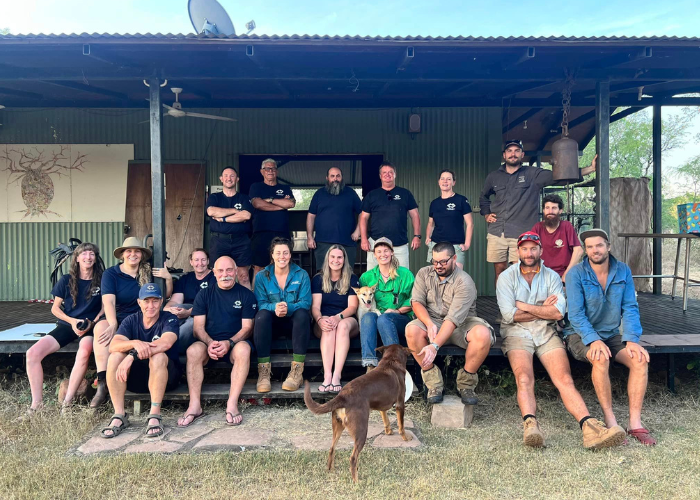 Chloe Kobel/AWC
Chloe Kobel/AWC
In August, AWC staff and volunteers teamed up with non-profit Disaster Relief Australia (DRA) to complete a large and urgent week-long clean-up. Approximately 18 tonnes of waste, mostly objects destroyed in the flood, was removed from affected buildings. The clean-up was considered high priority to prevent waste distribution and further moulding during the wet season.
Items removed from the sanctuary included damaged reference books and research documents, science and land management equipment, samples from the Mornington herbarium, electrical waste, whitegoods, people’s destroyed belongings and other debris. DRA sent nine volunteers made up of ex-military, former police and a nurse, to assist eight AWC regional and national staff in the mammoth Mornington clean-up.
Equipped with safety gear, two tractors, and a backhoe, the crew cleared thousands of damaged and destroyed items from buildings such as the Wildlife Research Office and Mornington Wilderness Camp Restaurant and Bar. All waste was loaded into nine skip bins and two semi-trailers which were kindly provided by the Shire of Derby in West Kimberley.
“The scale of what was achieved was utterly outstanding,” said Chloe Kobel, AWC Assistant Operations Manager, who coordinated the event. “The most commendable effort was the removal of all the fridges and freezers and their contents by DRA staff in full hazmat protective gear with AWC crew on the tractor and backhoe.”
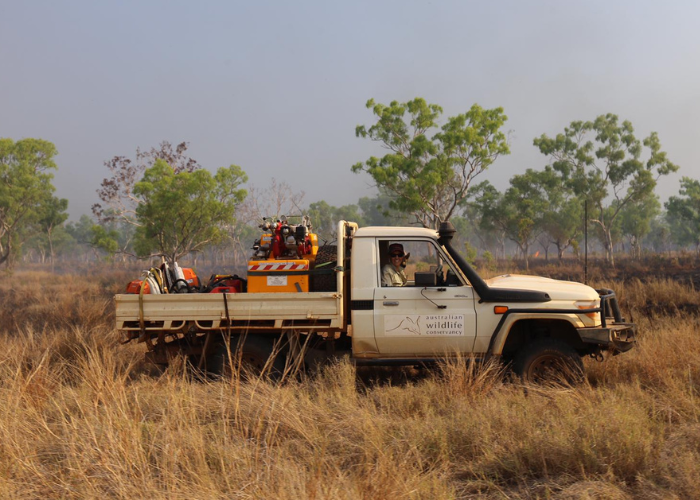 Stella Thomas/AWC
Stella Thomas/AWC
Stella and the team engaged a contractor to muster cattle on the Marion Downs portion of Mornington-Marion Downs Wildlife Sanctuary as well as Tableland. Up to 1,600 head of cattle were removed or returned to neighbours.
“We have had three consecutive generous wet seasons, so there were a lot of cattle across the two properties,” Stella explained. “We’ll likely continue to work with the contractors for the next few years to continually reduce the cattle numbers.”
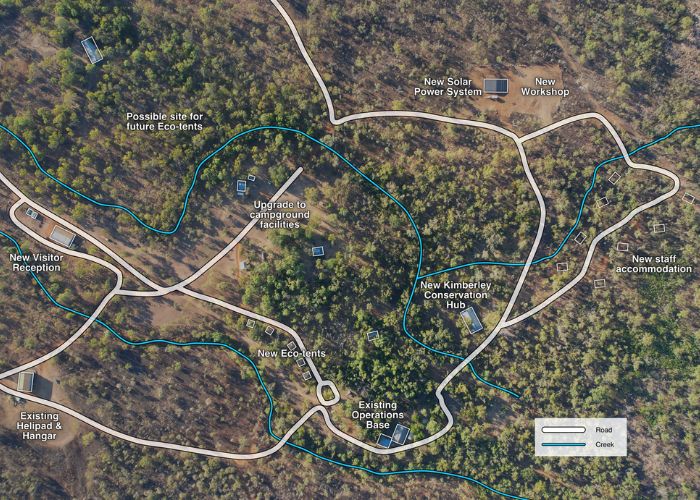
AWC has continued to invest in the construction of the Kimberley Conservation Hub at Charnley River-Artesian Range Wildlife Sanctuary (Wilinggin country). This infrastructure will act as a key base for scientific research, fire management, feral animal control, and other conservation projects spanning 4.3-6.1 million hectares of the Kimberley.
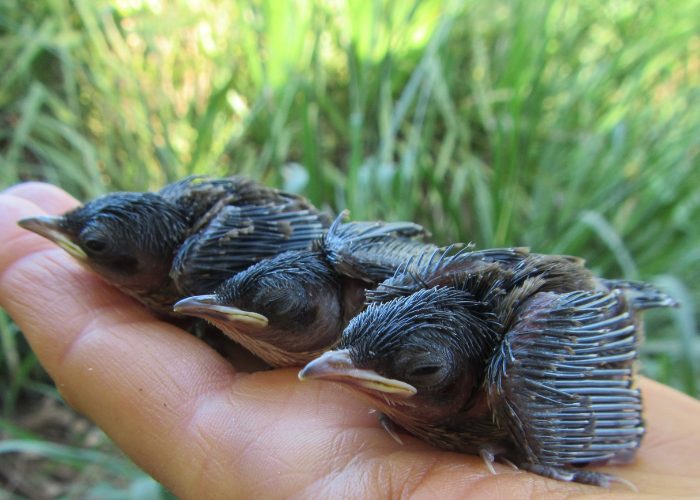
The next goal for Stella and the field team is to help AWC’s science team to return and restore the biodiversity monitoring program.
“The AWC ecologists are very missed here: they are the other half of why we are here,” Stella said.
A small team of ecologists from Monash University returned to the sanctuary in May, to restart a 17-year research program into a population of the endangered Purple-crowned Fairy-wren at Mornington, one of the longest ongoing field studies of a bird population in northern Australia. However, due to facility limitations, AWC’s scientists have been working on projects in other parts of the Kimberley.
“Over the next few months, we will focus on renovating flooded staff huts and getting them back to a liveable standard,” Stella said. “Fixing walls, plumbing, and even making them a little nicer for staff to come in and live. We are also setting up a makeshift campground for volunteers and interns.
“AWC is in the process of hiring a couple of new ecologists for Mornington, and we’re really looking forward to having the science team back on site.”
Of course, where there is progress there are often a few setbacks, and the Mornington team has been tested the last few months with unforeseen natural events. In addition to the unplanned late-season fires, the roof of the Mornington airstrip hanger was recently ripped off during an intense storm.
“There was a big gust of wind that lasted a few minutes and it just ripped off the top of the whole building,” Stella explained. “The building will need to be demolished, but that will be something we do next dry season.”
“We have had significant rain since mid-November, around 200 mm which has greened the place up after the dry season. We’re all holding our breaths waiting to see what this wet season brings but hopefully we can just continue moving forward with recovery.”
Support Australian Wildlife Conservancy's science-led conservation work and safeguard the future of Australia's native species
Donate Now